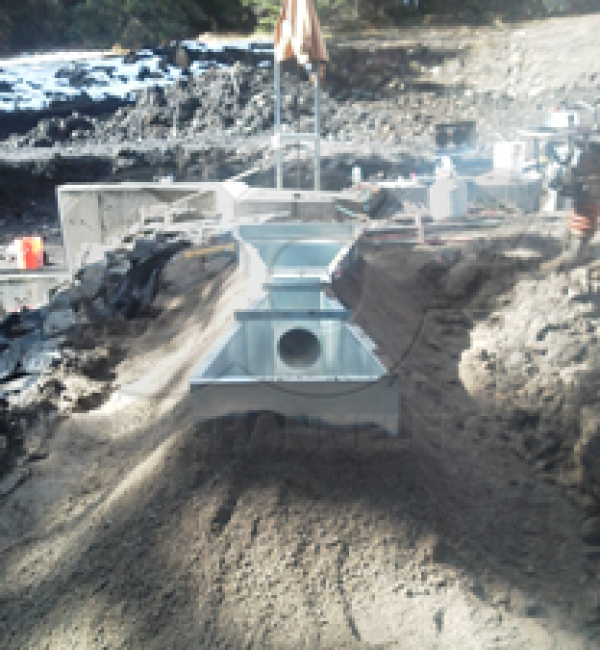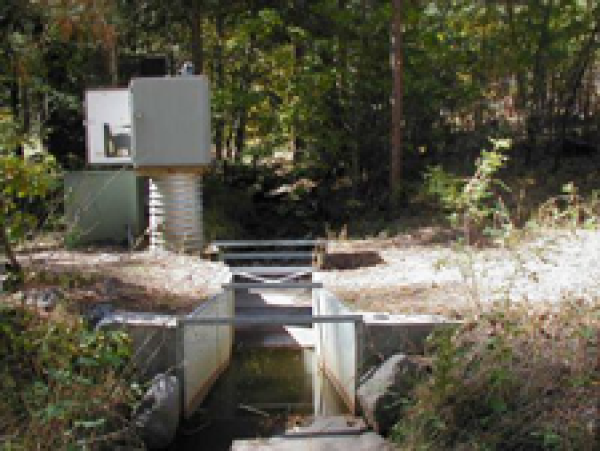This website uses a variety of cookies, which you consent to if you continue to use this site. You can read our Privacy Policy for
details about how these cookies are used, and to grant or withdraw your consent for certain types of cookies.
8 Avoidable Errors When Measuring Open Channel Flow
People make mistakes....
The majority of errors in open channel flow measurement result from designers, installers, or operators - not from the equipment itself. These errors result from a vareity of sources - from a lack to training to inattention to detail - and are avoidable.
Avoidable flow measurement errors can be broadly grouped into 8 categories:
- Device fabrication
- Point of measurement
- Flow meter calibration / zeroing
- Level measurement
- Device range
- Installation
- Maintenance
- Approach conditions

1. Device Fabrication Errors
- To operate properly, flumes and weirs must adhere to specific dimensions. Variation from these dimensions, whether intentional or unintentional, will affect flow readings.
- For weirs, the elevation of the crest above the channel flow is a common fabrication error as is notch angle and weir crest thickness.
- For flumes, deviation in the throat width (the narrowest portion of the flume) is a common error. In fact, ASTM D 1941-91 (Reapproved 2007) specifically limited the acceptable deviation for a Parshall Flume from its nominal dimensions at no more than +/- 2%. While JIS B7553 limits deviation to 1-1.5% for Parshall Flumes. H Flumes are also sensitive to throat fabrication errors as the openings on the smaller flumes are less than a 1-inch [2.54 cm] in width. It is for this reason that fiberglass is attractive as a material of construction. Once a mold is complete, other than contraction of the material during curing (which can be accounted for by resin selection, mold tolerances, and curing conditions), the product that results is dimensionally stable and repeatable.
2. Point of Measurement Errors
- In flumes and weirs, the head-to-flow relationship has been empirically determined and is specific to a single location in the device. Errors, sometimes substantial, will occur when the head is taken at some point other than the primary point of measurement, Ha. The primary point of measurement is always upstream of the critical section of the device.
- The most common point of measurement error is when a flow meter or head / staff gauge is mounted at the critical section of the device. For a flume the critical section is the throat. For a weir the critical section is at or by the weir crest.
3. Flow Meter Calibration / Zeroing Errors
- Calibration or zeroing a flow meter is critical to proper flow measurement. If not done properly, a systematic offset will be introduced into the system. The effect of this error is magnified as the discharge relationships for most weirs and all flumes are nonlinear - becoming increasingly large as the level increases.
- For weirs and certain flumes (RBC and Palmer Bowlus) calibration and zeroing is complicated by the fact that the zero level is not the floor of the channel or flume, but is instead offset from it.
- The crest of a weir (the zero elevation) should be located 2-3 times the maximum anticipated head, Hmax, above the channel floor. Unless the zero level is known is advance, it can be difficult to accurately measure the head and calibrate / zero the flow meter.
- For RBC and Palmer Bowlus flumes, the top of the ramp in the flume is the zero level.
4. Level Measurement Errors
- Even if the level is measured at the correct point of measurement, Ha, in a flume or weir, errors in determining the actual level can be just as detrimental as flow meter calibration / zero errors due to the nonlinear nature of the discharge equations.
- it is not uncommon for novice users to take a level reading from the water's surface to flume / weir floor and record this as the level. In RBC and Palmer Bowlus Flumes this would over-report the level by the height of the ramp. In weirs this would over-report the level by at least 2 times the maximum head, Hmax.
- Head / staff gauges can also be difficult to read, particularly under fluctuating conditions, or when the gauge is more than a couple of feet away.
5. Device Range Errors
- Each flume and weir have a range of flows and heads within which they will accurately measure flow. When flows or level fall outside of this range, higher or lower, the device will no longer be accurate. Corrections are not available for devices operating outside of their stated flow / head ranges.
- Weirs do not read down to zero. Plain and simple. Below 0.2-feet [6.096 cm] the flow over the crest of the weir may adhere to the downstream face. Certain flumes are accurate at flow rates lower than those of even 22-1/2º V-notch weirs can operate.
- Discharge tables for H Type Flumes are to the top of the flume. Keep this in mind when sizing an H Flume for estimated flows.
- Nested (dual range) flumes may be suitable certain flow conditions.
- For some flumes (Parshall, Montana, and Cutthroat), the sidewalls may be raised. While the discharge equations are believed to be accurate, they are not warranted to be so.
6. Installation Errors
- The accuracy of weirs is particularly susceptible to effects of a poor installation.
- Weir pools have specific sizing requirements to properly condition the flow approaching the weir. Undersized weirs pools - a common occurrence - result in higher than desired approach velocities.
- Weir plates must be held vertical. Deviations from the vertical greatly affect the flow of water over the weir crest.
- For weirs plates greater than 1/8-inch [0.3175 cm] thick, the beveled edge must be downstream to allow the water to spring from the crest of the weir.
- Flumes must be installed level from front-to-back and from side-to-side.
7. Maintenance Errors
- For weirs in particular, inspection and maintenance are important. Sedimentation and debris in weir pools should be regularly removed and weir crests should be inspected for damage, rounding, or clinging debris / growth. Weir plates should be checked for plumb.
- While corrections for lateral and longitudinal settlement have been developed for Parshall and Cutthroat Flumes, it is preferred that installation deficiencies are corrected instead.
- In cold weather locations flumes and weirs should be checked for frost heave.
- In earthen channels flumes and weirs should be checked for undermining, scour, and bypass.
8. Approach Conditions Errors
- The flow approaching a flume or weir should be tranquil and with a uniform velocity profile. Turbulence, surges, and excess approach velocity should be corrected through changes in the upstream hydraulics, process, and, where appropriate, flow conditioning structures (baffles, energy absorbing manholes, etc.).
Related Blog Posts
Explore more insights in our blog.

LOCATIONS IN ATLANTA, GA & BOISE, ID




